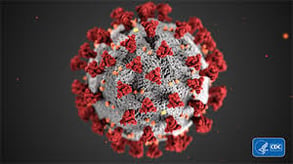The situation regarding COVID-19 seems to evolve daily. However, there are some key issues organizational leaders need to understand to effectively and responsibly strategize respond to the virus moving forward. In this two-part blog (watch for part-two later this week), we address some of the top information and guidance from experts and offer some tips for keeping staff safe, productive, and calm during this crisis.
- Let’s start with some good news. A majority of individuals who contract this virus will recover. Now the not-so-good news: As of today, over 40,000 cases have been documented; and many states have instituted Stay-at-Home orders. As cases spread, there will be continued disruptions in health care services, gatherings, business, and travel.
- The U.S. House of Representatives passed a bill last week to addressing sick pay and emergency family and medical leave. In short, this provides for paid and unpaid leave for coronavirus-related reasons, emergency paid sick leave and expanded emergency family and medical leave, emergency unemployment insurance funding, and reimbursement of costs to employers as tax credits.
- Responses by people vary widely. Some aren’t taking it seriously and are ignoring social distancing and other warnings, while others are panicking, hoarding supplies and food. Organizational leaders need to step up, present trustworthy, factual messaging, and model calm behavior.
- It is essential to educate all employees about how the coronavirus can be contracted. Stay on top of myths and misperceptions that arise and share facts and guidance from reliable sources such as CDC and World Health Organization (WHO).
- Employees are likely to have many questions about how COVID-19 will impact their work and pay. Establish a point of contact in human resources or elsewhere in your company for employees who have concerns; remind employees about policies concerning absences and working from home, including vacation, sick pay, family and medical leave, unemployment, and short-term disability; train supervisors on overreaction impacts and importance of adhering to antidiscrimination policies; and keep track of and promptly share updates from CDC and WHO.
- It is important to accept the lack of legal precedent and the importance of weighing risk and making the best possible decision that are process-driven and not prescriptive.
- Experts advise diversifying your supply chain and eliminating all outside suppliers in China. Before committing to a new supplier, review the company/contractor policies on communicable diseases.
- If any contractors are cleared to enter the building, require that they understand and practice proper hygiene (including handwashing, gloves, etc.).
Your top priority should be to keep COVID-19 out of your community, said Swati Gaur, MD, CMD, in a recent webinar from AMDA—The Society for Post-Acute and Long-Term Care Medicine. She observed, “Prevention, prevention, prevention…We need to understand that there is no treatment so far, so it is critical to do everything we can to keep the disease out of our buildings.” A sign at all entrances advising visitors to stay away is a start, she said. Some organizations are conducting questionnaires and taking body temperatures before allowing people to enter.
Dr. Gaur emphasized the significance of screening for both fever and respiratory symptoms, observing that AMDA and the Centers for Medicare & Medicaid Services (CMS) both recommend screening both residents and staff.e disease out of our buildings.” A sign at all entrances advising visitors to stay away is a start, she said. Some organizations are conducting questionnaires and taking body temperatures before allowing people to enter.
Protecting staff is essential, and this means that they know about what precautions to take and that necessary protective equipment such as masks, gloves, and respirators be available as necessary. The Occupational Safety and Health Administration (OSHA) requires that you notify employees of a confirmed COVID-19 case working in close proximity. The agency also has determined that employees have a right to decline to perform a task if the employer has refused to eliminate the danger involved, they genuinely believe that an imminent danger exists, and/or a reasonable person would agree that there is a real danger of death or serious illness/injury.

You must have a comprehensive hazard communication program. This should include container labeling and other forms of warning, safety data sheets, and employee training. Make sure that staff receive adequate training about tasks such as unique cleaning requirements related to COVID-19 prevention.
In addition to attending to people, it is essential to address the environment. For instance, a study earlier this week from CDC suggests that the virus can live on surfaces for as long as 17 days. For surface cleaning, the CDC recommends mixing 1 cup of bleach in 1 gallon of water. The agency suggests washing clothes using the warmest appropriate water setting and making sure to dry them completely.
Watch for another blog this week addressing ways you can keep employees, colleagues, your family, and yourself calm, focused, productive, and optimistic during these challenging times. We also will offer some creative tips for surviving and making the best of social distancing and isolation.